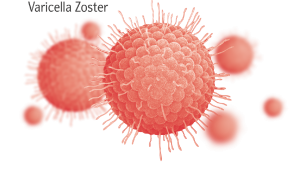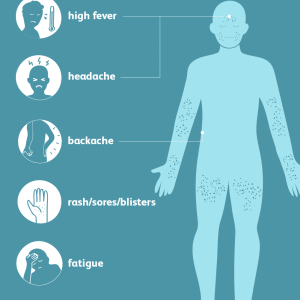- 26 January 2024
- 188
The Story of Chickenpox: What You Need to Know

Understanding Chickenpox
Chickenpox, caused by the varicella-zoster virus, is a highly contagious infection that primarily affects children but can also impact adults. The characteristic itchy skin rash, marked by fluid-filled blisters, undergoes a multi-phase healing process, making it a distinctive and recognizable condition.

Causes Unveiled
The culprit behind chickenpox is the varicella-zoster virus, known for its rapid transmission from an infected individual to others.

Who Gets Chickenpox?
While the majority of cases manifest in children under the age of 2, adults and older children are not exempt. Those working in child care facilities or unvaccinated individuals face higher susceptibility.
How Do You Get Chickenpox?
Transmission occurs through direct contact with an infected person’s rash or by inhaling droplets when they cough or sneeze. The contagious period starts before the rash appears and persists until all blisters have crusted over.

Symptoms Unveiled
- Early Signs: General malaise, body aches, fever, loss of appetite, and headache.
- Development of Rash: A progressive, itchy rash appears on the face, chest, and back, evolving through phases of papules, vesicles, and crusted sores.

Diagnostic Landscape:
Physicians can diagnose chickenpox by examining the characteristic rash. Due to its highly contagious nature, individuals are advised to consult their doctor remotely before seeking in-person attention.
Differentiating Mpox and Chickenpox
| Feature | Mpox (Monkeypox) | Chickenpox |
|---|---|---|
| Causative Agent | Orthopoxvirus (distinct from the Varicella-zoster virus) | Varicella-zoster virus |
| Onset of Spots | Simultaneous appearance of spots | Spots develop over several days |
| Size and Depth of Sores | Sores are typically larger and deeper | Blisters are generally itchy, not as painful |
| Pain Level | Blisters can be painful | Blisters are characterized by itchiness |
| Blisters Appearance | All spots blister and crust over at the same time | Blisters can appear in different stages concurrently (papules, vesicles, crusted sores) |
| Duration | Lasts longer than chickenpox | Symp |
Chickenpox in Adulthood
While less common in adults, severe cases of chickenpox can lead to heightened complications, especially for those lacking prior exposure or vaccination.

Treatment Approaches
- Medications: Acetaminophen helps alleviate fever and pain, while antiviral medications like acyclovir may be prescribed.
- Cautionary Measures: Avoid certain painkillers, especially in children, and strictly prohibit aspirin due to the risk of Reye’s syndrome.
Home Remedies
- Lukewarm Baths: Infused with colloidal oatmeal or baking soda.
- Calamine Lotion: Topical application for itchy spots.
- Oral Antihistamines: Alleviate itching.
- Hydration and Diet: Staying well-hydrated, opting for water, and avoiding foods that exacerbate mouth sores.

Navigating Complications
Complications, more prevalent in adults, encompass shingles, bacterial infections, toxic shock syndrome, encephalitis, pneumonia, and, albeit rarely, death.
Vaccination
The varicella vaccine stands as a pivotal tool in preventing chickenpox. Children should receive two doses, and unvaccinated individuals over 13 can also benefit.

Preventive Measures
Apart from vaccination, adopting practices to avoid contact with infected individuals remains crucial in preventing the spread of chickenpox.
When to Seek Professional Guidance
While most cases resolve autonomously, seeking medical attention is imperative if complications arise, including eye involvement, severe rash, bleeding, or respiratory distress.
In conclusion, this comprehensive exploration equips individuals with a profound understanding of chickenpox, fostering proactive measures for prevention and effective symptom management. Vaccination emerges as the linchpin in safeguarding against this contagious viral infection.

